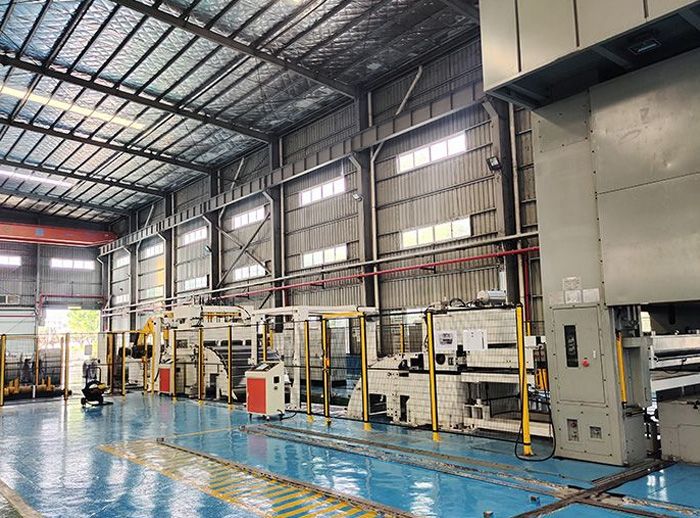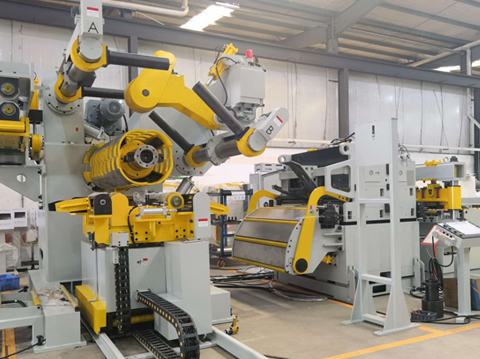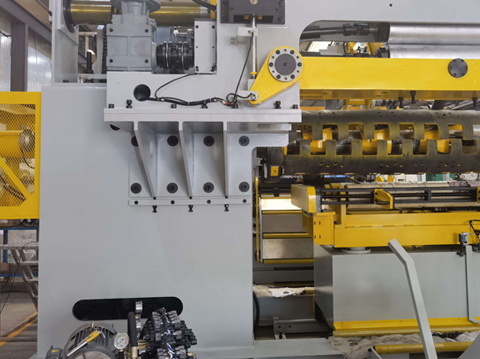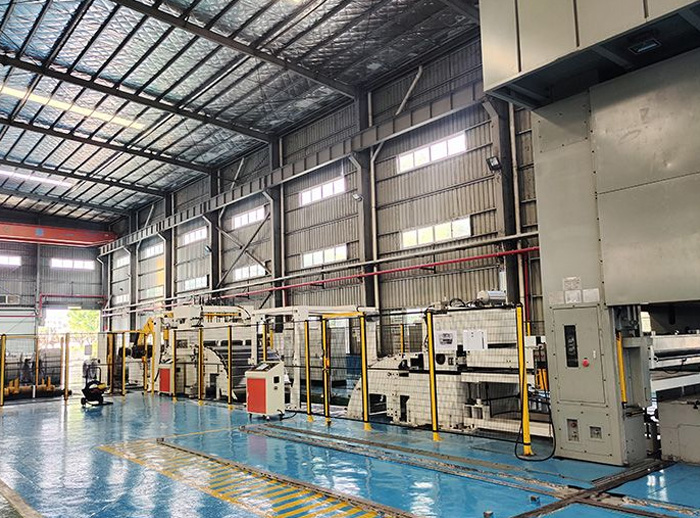What Is A Coil Blanking Line?

A Coil Multi-Blanking Line is essentially a Cut-To-Length Line combined with a Slitting Head that is well-suited for businesses that require high levels of production.
The coil blanking lines are commonly used in the automotive industry, for the production of car bodies and structural parts, most car manufacturers, therefore, require high production capacity combined with high quality of the produced blank, especially for car body parts that need to be stamped thereafter. The blanking line is composed of a coil feeding line, a loop bridge, a press, and a stacking system entrusted with the sheet stacking and the successive distribution to the various forming presses installed in the factory.
What is a coil multi-blanking line?
A Coil Multi-Blanking Line is essentially a Cut-To-Length Line combined with a Slitting Head that is well-suited for businesses that require high levels of production. A Coil Cut-To-Length line makes flat metal sheets out of metal coils (a roll of metal produced by metal mills that resemble a giant paper towel roll). A coil cut-to-length line uncoils metal rolls, levels them, then cuts them lengthwise to your specifications. Slitting heads are used to cut metal coils to a specific width.


What is a coil blanking line?
A coil blanking line is a machine that produces flat sheet metal from coil stock. The coil stock resembles a giant paper towel roll, except it’s made of metal. Most projects require this metal to be flattened to eliminate its natural curvature.
To achieve this, the coiled metal is fed through a straightener or leveler. As the sheet metal material moves through the straightener or leveler, it gets manipulated by opposing, adjustable rollers. This manipulation results in the flattening of the material. Straighteners only remove coil-set curvature, but levelers also improve flatness by correcting common defects found in coiled sheet metal stock.
SunRui Machine coil blanking lines will flatten metal coil at hundreds of feet per minute. Contact SunRui Machine today to find a unit that works for your business.
How does a coil multi-blanking line work?
A coil multi-blanking line works by combining two machines, a cut-to-length line, and a slitting head. A cut-to-length line flattens sheet metal and cuts it to a specific length. It uncoils metal rolls (a roll of metal made by metal mills that looks like a giant paper towel roll), flattens them, then cuts them. A slitting head shears the width of a metal coil into multiple narrower coils. A wide range of materials and thicknesses can be slit.
Coil Blanking Line
At what speeds do multi-blanking lines operate?
Multi-blanking lines produce sheet metal at speeds between 100 feet per minute (FPM) to 400 feet per minute. This is equal to 30 meters per minute (MPM) to 120 meters per minute. Speeds vary depending on the specific machine you’re using.
What is the process of making multiple blanks from the coil?
To produce metal blanks from the metal coil, you need to use a multi-blanking line. Metal coil comes as a large mass-produced roll (it resembles a giant paper towel) and is generally unusable in that form. A multi-blanking line will change this giant roll of metal into flat metal sheets.
A multi-blanking line produces flat sheet metal from coil stock by feeding it through a straightener or leveler. As the coiled metal moves through a straightener or leveler, it’s flattened by opposing, adjustable rollers. Straighteners only remove coil-set curvature, but levelers also improve flatness by correcting common defects found in coiled sheet metal stock.
What is the difference between the slitting and multi-blanking processes?
Both slitting and multi-blanking involve manipulating a metal coil (a large roll of metal that resembles a paper towel) in some way.
The difference between them is that multi-blanking is a general term for producing metal “blanks” or flat sheet metal out of metal coils for manufacturing. Multi-blanking involves uncoiling a metal roll, flattening it, then cutting it.
Slitting, on the other hand, is a specific process that involves cutting a metal coil into narrower widths as needed for your production.
Contact us to find a multi-blanking line that’s right for your business.



